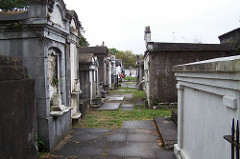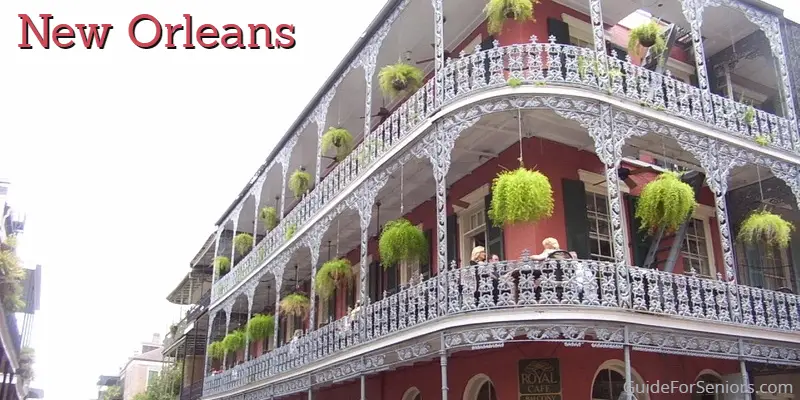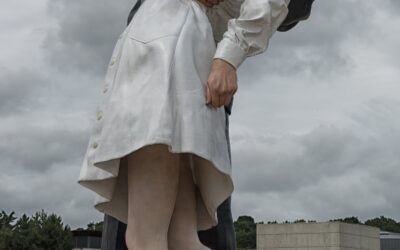Mardi Gras
The city feels like vampires should make their home there. After all, it is a bit spooky at night. Anne Rice set her famous Vampire Series in The Big Easy. After traveling to New Orleans, one can easily understand why. The cemeteries are full of long shadows and tall tombstones. Who knows what is hiding among them? If you believe the stories then you may not want to go out at night in the gloom. It feels like it all should be true. Why else would Mardi Gras celebrants dress up and cover their faces with masks? You can not tell the dead from the undead.
Nevertheless, Mardi Gras is worth seeing. The residents and visitors alike go crazy during that time of the year. According to Wikipedia, Mardi Gras is “French for ‘Fat Tuesday’, reflecting the practice of the last night of eating richer, fatty foods before the ritual fasting of the Lenten season.
Related popular practices are associated with celebrations before the fasting and religious obligations associated with the penitential season of Lent.” I am not sure about the fasting but New Orleans is known for their celebrations.
The French Quarter
Mardi Gras is not the only reason to travel to New Orleans. The French Quarter is the oldest neighborhood in the city and was built on the highest ground. The architecture combines Spanish, French, Creole, and American, thus creating a style of its own. House tours are available so you can see the architecture of the early 19th century. Both the Herman Grima House and the Gallier House conduct tours throughout the year. The Beauregard-Keyes House and Garden Museum are also available for tours. The Napoleon House is another fixture in New Orleans. However, it is not for touring but for dining. Be sure to try the muffuletta, a New Orleans sandwich, and a specialty at this restaurant.
Cemeteries

Only in New Orleans could the graveyards be tourist attractions. You can not leave until you visit at least one. A famous cemetery, St. Louis Cemetery #1, is close to the French Quarter as well as to the downtown area.
Several well-known people are buried there, including Marie Laveau, the legendary “voodoo queen.” She died in 1881 at the age of 80. Rumor has it that with the use of voodoo and the aid of her ever-present snake, she had the power to heal as well as the power to cause harm. The “Widow Paris” had great power over the New Orleans Creole community.
Many of the graves are very old and the headstones are often in disrepair. The statues in the cemeteries are beautiful. It is unfortunate that many are being stolen and have not been replaced. There are cemetery tours available for those who want more facts than fiction. Try a carriage ride and then join one of the cemetery tours. Or do both at the same time.
Music
Since New Orleans is known to be the birthplace of Jazz Music, the town is filled with music. Although many of its hometown musicians are in high demand, they still perform in many of the local bars and playhouses. The bands usually include brass instruments, most often trumpets, trombones, drums, and the ever-important saxophone. Ragtime and cajun music are also favorites of the crowds. Attending a festival adds to the flavor of the city. You should check out their festival calendar.
Food
New Orleans is best known for Cajun and Creole food. Each restaurant has its own specialty of gumbo, composed of seafood, chicken, sausage, okra, and whatever else the chef wants to add. You can not go wrong with this dish anywhere. Boiled crawfish is a delicacy. Jambalaya is a traditional Cajun dish consisting of rice, shrimp, chicken, sausage, and vegetables. The food experience in New Orleans is definitely authentic. You may think Cajun and Creole are the same but undeniably they are not. Creole cuisine always incorporates tomatoes into the dishes. Cajun dishes have more cayenne pepper but that does not necessarily relate to spicy. It is considered to be well-blended with spices. Everyone needs to try it at least once.
Visiting New Orleans
The Audubon Nature Institute calls New Orleans home. The zoo, aquarium, butterfly garden, insectarium, and theater are all available. In addition, Audubon Park boasts a bird island and a golf course. There are many golf courses in New Orleans but the Audubon course was highly rated by Golf Advisor.
In 2005 Hurricane Katrina damaged the historical city of New Orleans. 49% of the city was built lower than sea level so when the water entered the city, it had no place to go. However, since the French Quarter and the Garden District were on the highest ground available and above sea level, they escaped the worst flooding. The city is definitely a work in process.
New Orleans is certainly the Big Easy. A newspaper in the 70s started calling the city by this name and the nickname stuck. The easy-going way of life of the deep southern city was being compared to the much faster pace in the northern city of New York. I think she had it right. They know how to party but at the same time take a leisurely view of life. They leave the hurried pace to other places. Try their slower pace for a few days. You will find it relaxing.









0 Comments